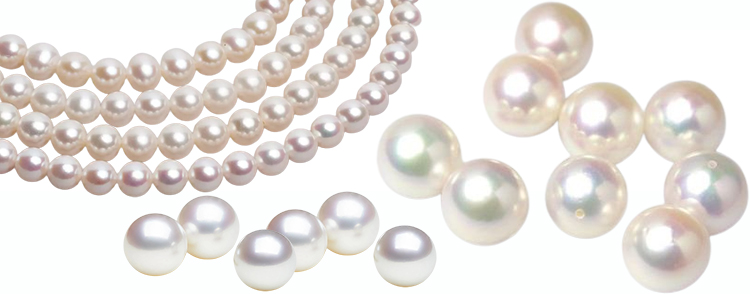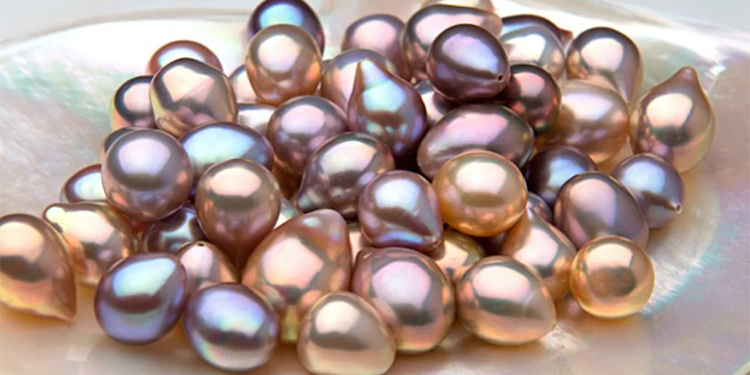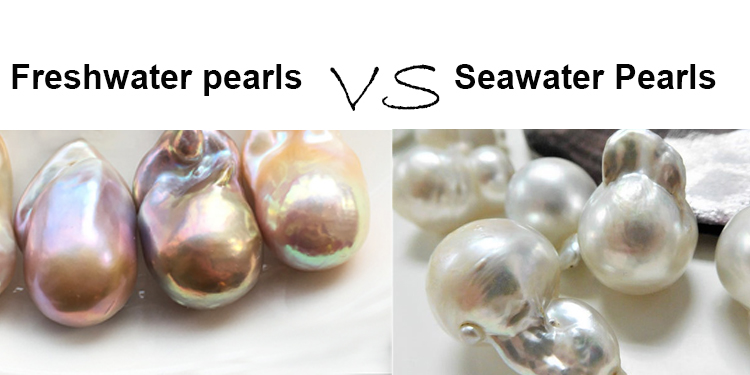Sea Pearls vs Freshwater Pearls

Recently, the jewelry world has been abuzz with the rising stars of pearls - sea Akoya pearls and high-quality freshwater non-nucleated "Little Australia White" pearls.
So, if you're suffering from the paradox of choice, how should you make your selection? Today, we'll teach you how to differentiate between them.
Sea Akoya Pearls

What's commonly referred to as Akoya pearls today is a type of sea pearl, primarily produced in Japan.
The name "Akoya" comes from a Japanese pronunciation, also transliterated as "Agoya" pearls.
Akoya pearls have a unique luster, with high-quality ones exhibiting intense brightness, earning them the nickname "little light bulbs."
Size: Generally, their diameter ranges from 5-9mm, but you can find smaller ones at 1mm and larger ones at up to 10mm.
Origin: Mainly produced in the Seto Inland Sea area of Japan, with some output in regions of Guangxi and Guangdong, China.
Formation:
Cultivated by implanting bead nuclei, and the mother-of-pearl used is from the Pinctada martensii shell (originating from China).
It typically takes 1.5-3 years to culture one pearl, and each oyster can produce 1-2 pearls at most.
Rarity Level: High
Investment Value: Relatively high
Colors: Sakura pink, white, gray-blue, gold, etc.
Characteristics: Round shape, strong luster, crystalline appearance, rich overtones
Nacre Thickness: Generally 0.3-1mm
Price: Typically ranges from 100 to 1500 RMB per pearl, while pearl strands generally range from 2000 to 30000 RMB.
Freshwater Non-Nucleated Pearls

These pearls are produced in rivers and lakes.
The main cultivation areas are in Jiangsu, Zhejiang, Guangxi, and other regions, with the use of triangle sail mussels.
Size: Typically, their diameter ranges from 3-9mm.
Origin: China
Formation: They usually grow in relatively closed aquatic environments, and one mussel can produce around 13 pearls. Cultivation takes around 3-4 years.
Rarity Level: Medium to low
Investment Value: Medium to low
Colors: White, orange, pink, purple, etc.
Characteristics: Rich colors, large output, high-quality outer layer with smooth surface, relatively strong luster (similar to Akoya pearls)
Nacre Thickness: Generally 1-4mm
Price: Typically ranges from tens to hundreds of RMB per pearl, while pearl strands are usually priced from hundreds to thousands of RMB.
Overall Comparison

In terms of appearance:
Both can produce round, flawless pearls, with saltwater Akoya pearls having a tendency to be perfectly round and have intense brightness, while freshwater non-nucleated pearls mostly don't achieve perfect roundness.
Freshwater non-nucleated pearls have relatively richer body colors, but they lack the vivid overtones that saltwater Akoya pearls have.
Both can achieve similar sizes, with freshwater pearls typically having thicker nacre layers.
In terms of cultivation:
Saltwater Akoya pearls require the implantation of spherical bead nuclei, while freshwater non-nucleated pearls involve the implantation of small pieces of outer mantle tissue.
In terms of production:
Saltwater Akoya pearls have strict production control, while freshwater non-nucleated pearls have larger output but limited high-quality pearls.
In terms of value:
High-quality saltwater Akoya pearls are rarer and more expensive, often priced at more than ten times that of freshwater pearls of the same grade.
conclusion
Overall, saltwater pearls take longer to cultivate, but they have superior quality and luster, albeit at a higher price point.
On the other hand, freshwater pearls are more affordable, quicker to form, but generally have less luster and smaller sizes.
Your choice can be based on your personal preferences and needs.


Leave a Comment